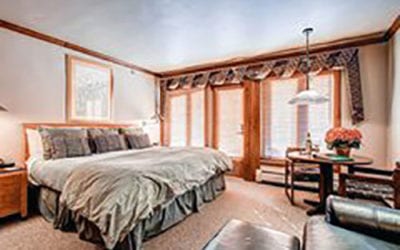Climbing up the wide circular stone staircase to our hotel room in the Chateau des Ducs de Joyeuse on the first night, I knew this would be a very different trip. I could just as easily be accessing a medieval castle as a lodging facility — and then I found out I was, although I suspect our room was a lot less drafty than those of the lords and ladies who preceded us.
Which certainly set the tone for our Walking Through History Tour of Southern France — conducted, ironically, by a company called New England Hiking. As we hiked through, around, up and over one medieval village after another, traversing castles and countryside and learning about the Middle Ages of the 11th-14th centuries, we were immersed in their history.

Our first visit was to the tiny medieval town of Cassaignes, that does not see a lot of drive-by traffic. Consisting of a few houses and churches dating back 900 years, the sense of history was somewhat moderated by the large red tractor by the side of one house that appeared anachronistic by several centuries. Still, it was a start.
As we traveled from one medieval village to another, we heard stories of church intrigue and love stories, military battles and religious controversies, mysterious anecdotes of priests and royals and other local residents over the centuries that brought the towns to life in a very tangible way. For one, in the 1890’s a priest named Berenger Sauniere sold secret medieval documents he found in the hollows of the church at Rennes Les Chateaux for great sums of money. Those documents? Well, does Holy Grail mean anything to you?

Accompanying us on much of our journey were the Cathars, Roman Catholic heretics who were prominent from the 10th-12th centuries, but were ultimately destroyed during the Crusades, and the Knights Templar, a well-financed military religious order of the 12th-14th centuries, and later rumored to be a secret society that exists to this day.
The impregnable Queribus Tower, the last of the Cathar castles to fall, was an old Roman structure, initially built in the 4th century. It was later refurbished by the Cathars to resist attack during the Crusades. The most recent restorations? They took place in the 13th century. This sort of time warp is ever present in southern France. The present and past – long-ago past — coexist harmoniously as one can travel back and forth through multiple centuries within a couple of hours of doing day-to-day errands.

One morning early, Richard pointed knowingly to a small abbey halfway up a mountain. Our collective response was, “You’re kidding, of course?” He wasn’t. Not only did we make it to the abbey, we reached the top of the mountain. Admittedly, the ascent itself was much less challenging than it appeared, but we still all felt unduly proud.

But nothing we had seen up to then could prepare us for Carcassone, one of Europe’s largest and best preserved fortified cities, an entire medieval town protected by almost two miles of double walls and 52 watchtowers.
Hard to imagine yourself walking among the knights, priests and ladies of the time with the proliferation of cafes and souvenir shops keeping you grounded in the modern world. Still, how often do you ask for directions to a bathroom and are told to take a right turn over the drawbridge? I managed to avoid the moat enroute…
Late in the evening or early in the morning, when most of the tourists are gone, it’s much easier to imagine yourself a Cathar merchant meandering the cobblestone streets, through the maze of bridges, towers, concentric walls, castles, archways, tunnels and streets so narrow you can reach out your arms and touch both sides simultaneously. And then once they let the crowds back in, it’s possible to imagine another similarity to medieval times – only now the throngs, equally motivated, are coming to shop rather than siege.
As we left Carcassone, our exposure to medieval architecture and lifestyle wasn’t over, but our connection with the Cathars and the Knights Templar was, so it seemed an appropriate time to say au revoir.
For more information about the Walking Through History Tour of Southern France, visit nehikingholidays.com or call 800-869-0949.
Photo credits: Fyllis Hockman
Top to bottom: Watchtowers of Carcassone, typical town, picnic in Pyrenees, Peyrepertuse Castle, Chateau des Ducs de Joyeuse.

Fyllis Hockman is a multi-award-winning travel journalist who has been traveling and writing for over 30 years — and is still as eager for the next trip as she was for the first. Her articles appear in newspapers across the country and websites across the internet. When not traveling, she is almost as happy watching plays or movies, working out and sitting on a barstool next to her travel-writing husband.




